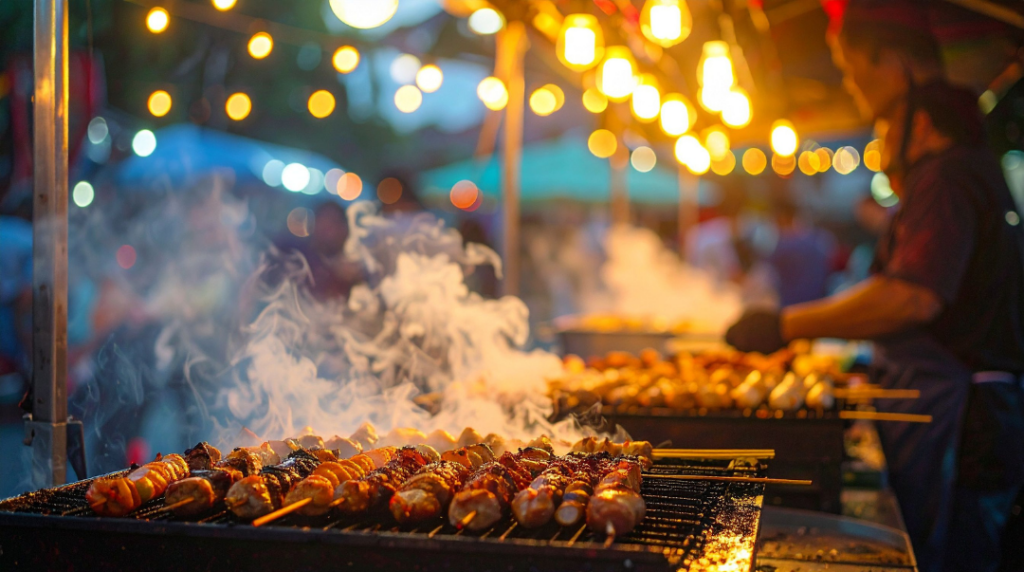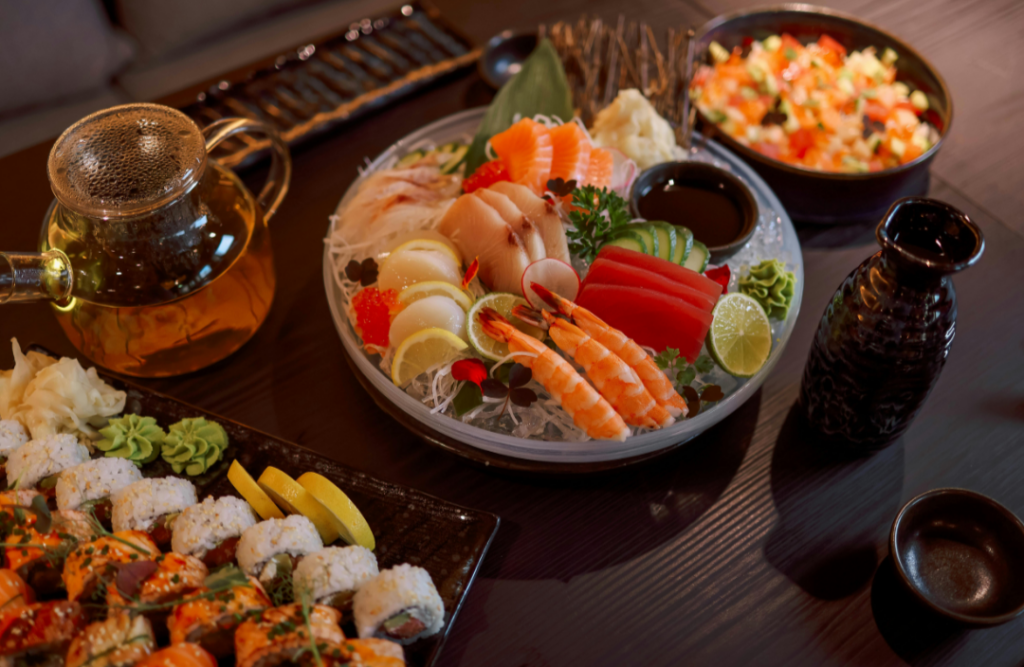A Taste of the World: From Street Eats to Fine Dining
Food is more than just sustenance—it’s a window into a country’s history, geography, and culture. Every bite tells a story, from bustling street markets in Bangkok to elegant dining tables in Tokyo.
For TEFL teachers living and working abroad, trying local food is one of the most exciting ways to experience a new culture. It’s not just about tasting new flavours—it’s about understanding people, traditions, and ways of life. This World Food Day, let’s take a look at street eats to fine dining, exploring the world’s most popular TEFL destinations and the cultural connections that come with every meal.
Street Eats: Everyday Flavours from Around the Globe
Street food is daily life in many countries—it’s affordable, accessible, and full of flavour. For TEFL teachers abroad, grabbing food from a local stall or market is often the first step to feeling like a true local.
Thailand: Bangkok’s food stalls are legendary, serving pad Thai, mango sticky rice, and som tam (papaya salad). Adventurous eaters might even try crispy crickets or grasshoppers!
Vietnam: Enjoying a steaming bowl of pho or a freshly made banh mi on a bustling street corner is a must. These dishes reflect Vietnam’s balance of sweet, sour, and salty flavours.
Mexico: Tacos, tamales, and elote (grilled corn) are part of everyday life. Each region has its own twist—like fish tacos in Baja or cochinita pibil in Yucatán.
China: Wander through a night market and you’ll find dumplings, baozi (steamed buns), and jianbing (savory crepes)—all made right before your eyes.
These street eats tell stories of local life, history, and community. They’re also a fantastic way to practice real-world English with students or locals. Try using phrases like:
- “How much is this?”
- “Can I have it without …?”
- “What do you recommend?”

Fine Dining: Meals for Celebration and Tradition
While street food shows daily life, fine dining highlights cultural pride, tradition, and togetherness.
Japan: Kaiseki cuisine—a beautifully presented multi-course meal—reflects respect for ingredients and the changing seasons.
Spain: Tapas culture encourages conversation and sharing. From patatas bravas to paella, food brings people together over laughter and good wine.
South Korea: Korean BBQ is both a meal and an experience. Grilling meats at the table and sharing side dishes (banchan) is all about connection and community.
UAE (Dubai): Fine dining blends Middle Eastern and international flavours—think fragrant lamb dishes, mezze platters, and luxurious buffets with skyline views.
Each of these dining experiences teaches us something about the values of hospitality, respect, and celebration that shape a culture.

Food and Friendship: How Meals Bring TEFL Teachers Together
For many TEFL teachers, food is not only a cultural experience—it’s also a social one. Sharing a meal can be the start of lifelong friendships.
Whether it’s meeting colleagues for breakfast at a local café, joining fellow teachers for street food after class, or organizing a weekend dinner with international friends, food has a way of bringing people together.
- A casual lunch can become a language exchange.
- A shared cooking night can turn into a cultural learning experience.
- A Sunday brunch can make a new country feel a little more like home.
These shared moments over food often become some of the most cherished memories of living abroad.
Fun Food Facts Around TEFL Destinations
Thailand: Insects are a popular, protein-packed street snack.
Japan: Presentation is key—food should be as beautiful as it is delicious.
Spain: Bread is sacred—never wasted, always shared.
Mexico: Corn is central to life, appearing in tortillas, tamales, and even desserts.
Vietnam: Fish sauce is the secret ingredient that ties many dishes together.
China: Tea isn’t just a drink—it’s a symbol of friendship and respect.
These facts can also make great ESL classroom discussions about culture and customs.
Food as a Learning Tool for ESL Students
Food is one of the easiest and most enjoyable ways to make language learning practical and fun. In the classroom, teachers can:
- Teach vocabulary – ingredients, utensils, and cooking methods.
- Practice conversations – ordering food, asking for the bill, or describing flavours.
- Encourage cultural exchange – students can share food from their country or describe how mealtimes differ around the world.
- Interactive activities – “Design your dream restaurant.” “Guess the country from a food description.” “Plan a dinner party menu using English.”
When lessons involve something as universal as food, students are more engaged and confident in using English beyond the classroom.
From sizzling street food to elegant fine dining, food is a celebration of culture, connection, and curiosity. For TEFL teachers, it’s also one of the best ways to connect with locals, bond with fellow teachers, and build a sense of community abroad.
This World Food Day, try something new—taste a local dish, join a food market tour, or invite your fellow teachers out for dinner. Every meal is a story, every bite a bridge between cultures.
Because no matter where you teach or travel, food has a way of making the world feel a little closer—and a lot more delicious.
The post A Taste of the World: From Street Eats to Fine Dining appeared first on Premier TEFL.




